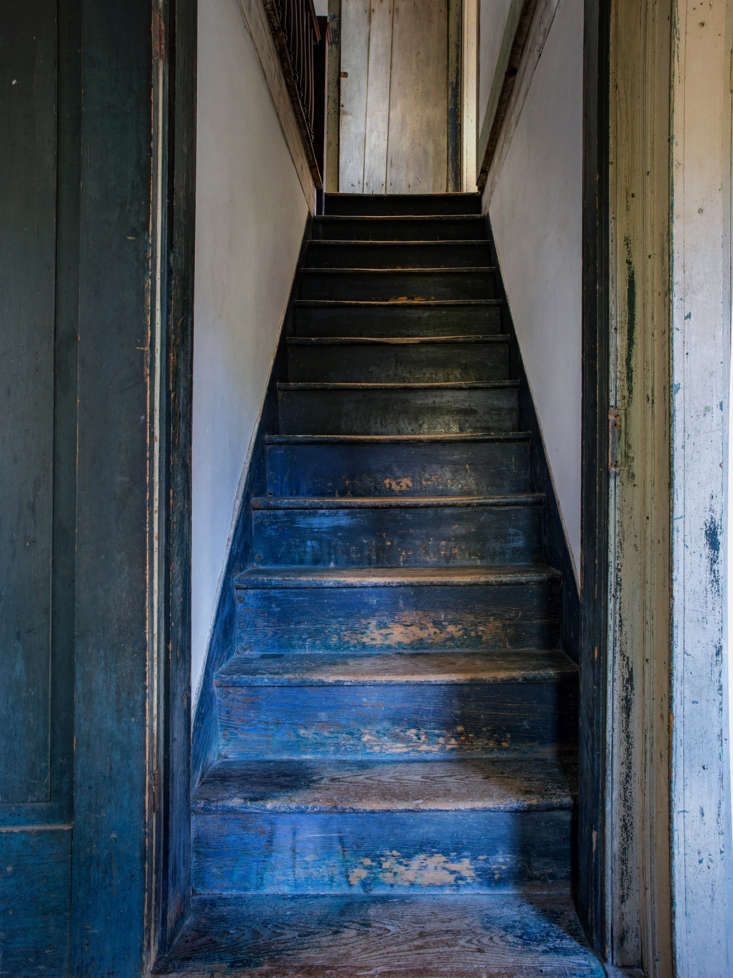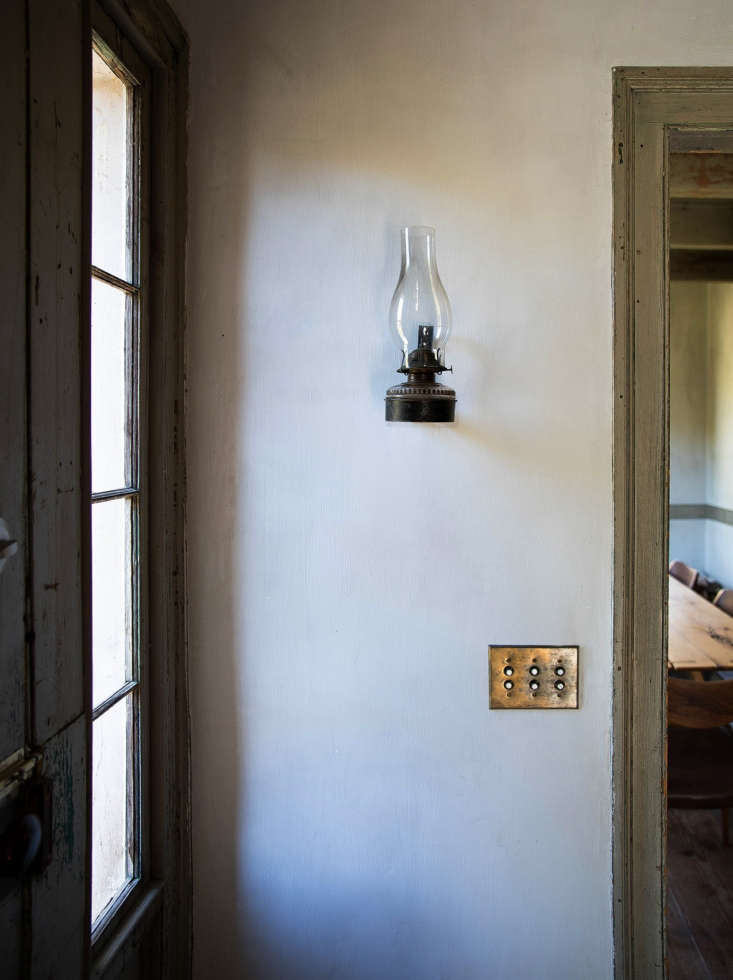You’ve found it: a beautiful, rambling old farmhouse, with wide-plank wood floors, original paned windows, maybe a big barn. And, out back, a few trees and a shady, rolling lawn—the perfect place to hang a hammock, just as soon as you tackle your own Fixer-Upper-style renovation. But be warned before you start: What you love most about your farmhouse might cause you the most headaches. Here’s what to know before embarking on a farmhouse renovation (and what to leave as-is).
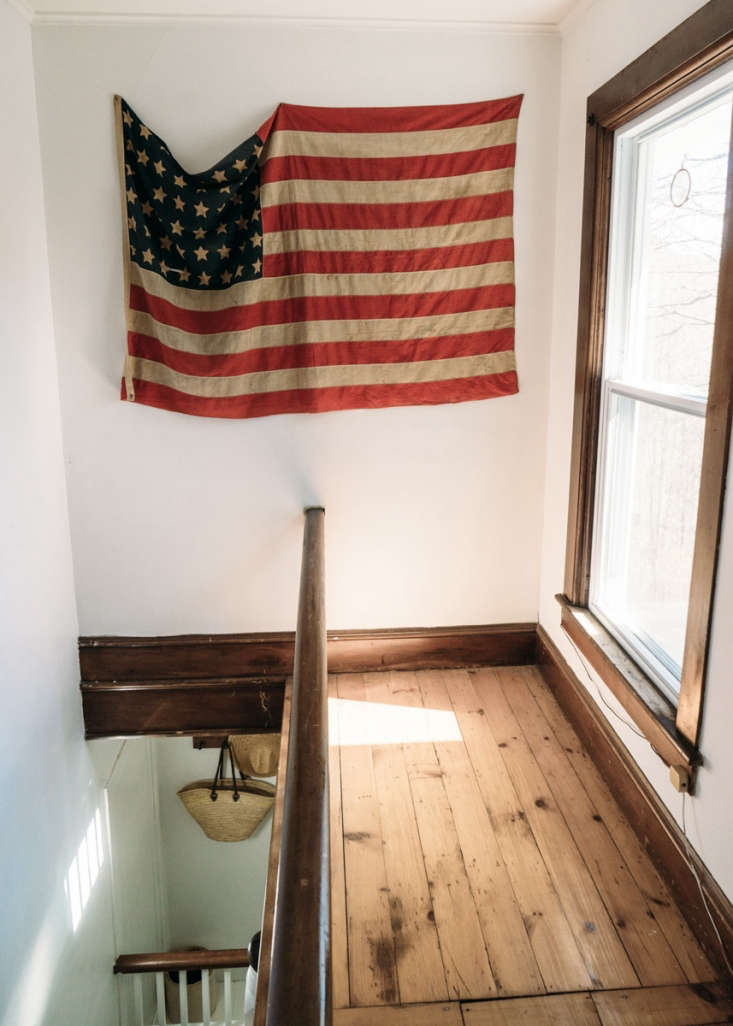 Above: Photography by April Valencia, courtesy of Rip & Tan, from The Catskills Farmhouse of Two Brooklyn Creatives, Weekend DIY Edition.
Above: Photography by April Valencia, courtesy of Rip & Tan, from The Catskills Farmhouse of Two Brooklyn Creatives, Weekend DIY Edition.
1. Those wood floors might need to replaced.
The good news is, good-quality wood floors can withstand a lot of refinishing—the maximum is about 10, according to Denver-based MacDonalds Hardwoods—which takes more time but is less expensive than total replacement. But if the original wood floors in your farmhouse are getting close to that number, or are just in bad shape (MacDonalds Hardwoods says to look for warping, loose boards, termite damage, or under-floor damage), you may be looking at total-floor replacement while you’re living there. (Otherwise, consult What to Know About the 4 Most Popular Wood Floor Finishes for a few options.)
2. There may be hidden dangers.
Keep in mind that an old farmhouse (or any house built before 1978) may have lead paint on the walls—or asbestos. Lead paint is particularly a problem in window wells, where the paint can flake off or pulverize when the windows open and close. Check with the local authorities for the best, safest way to proceed, and be sure to work with contractors trained to handle toxic substances.
Above: Photography by Justine Hand for Remodelista, from Saved from Abandonment: A Historic Hudson Valley Farmhouse Receives the Ultimate Makeunder.
3. You could spend a small fortune upgrading the basics.
The rule of thumb with any remodeling project is to remember that it will cost more than you think—but this is especially the case with old houses like farmhouses. Once you start, you’re sure to discover things that need replacing: old electrical systems (knob-and-tube wiring will need to be brought up to code), water pipes, and the HVAC system. If you don’t have room for a full-blown HVAC system or want to minimize the disturbance to the bones of the house, consider an efficient mini-duct HVAC system, with much smaller tubing and ducts that can be fitted easily and unobtrusively into the walls or floors.
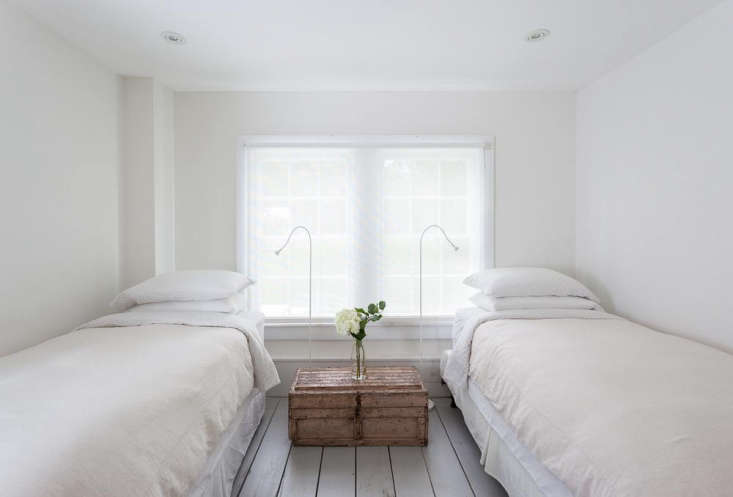 Above: Photograph from The Country Rental: A Floating Farmhouse in Upstate New York.
Above: Photograph from The Country Rental: A Floating Farmhouse in Upstate New York.
4. The charming old windows might be drafty.
Those beautiful old windows might mean a long, chilly winter, since they’re likely single- (not double-) paned. And replacing them can be costly: up to $800 or $1000 just for the window, according to Angie’s List. But some experts say slightly draftier windows are a small price to pay for having original windows: “Never, never, never throw away old windows,” Ipswich, Massachusetts-based architect Matthew Cummings told Forbes. Newer windows don’t last as long and aren’t built as sustainably, he says. Consider having old windows repaired by an expert, not replaced.
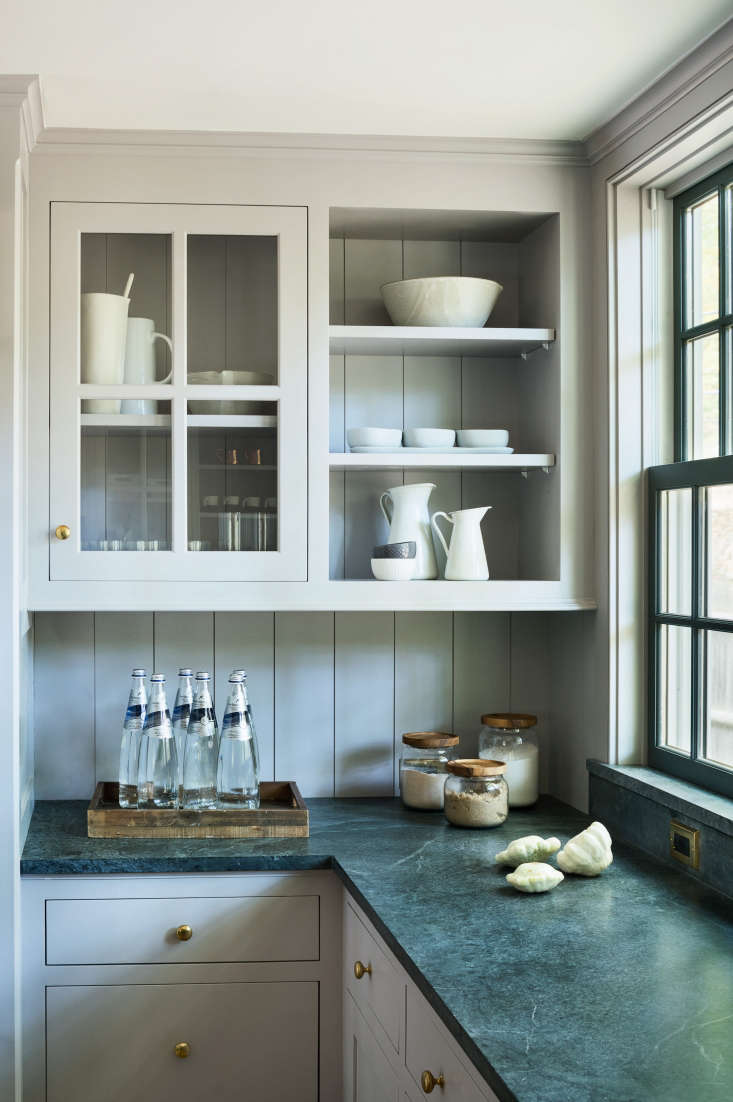 Above: Photograph by Amanda Kirkpatrick and styling by Anna Molvik, from A Renovated Farmhouse in Bedford, NY, with Scandinavian Influences.
Above: Photograph by Amanda Kirkpatrick and styling by Anna Molvik, from A Renovated Farmhouse in Bedford, NY, with Scandinavian Influences.
5. Soapstone counters are not quite zero-maintenance.
Soapstone is a popular choice for farmhouse-style interiors, and it’s generally a rugged one: It’s heat-resistant, stain-proof, and isn’t affected by acidic materials. But be forewarned that it can nick and scratch easily (cutting boards are important). Four years in, Fan reports, her soapstone counters have worn unevenly and dent from even dropping a can. (Read her full run-down in Soapstone Counters: Are They Worth It?) And soapstone does require spa treatments—in the form of mineral-oil massages—if a dark, almost black look is what you’re going for. Read more in Remodeling 101: Soapstone Countertops.
6. That clawfoot tub may have to go.
You might be picturing a vintage, cast-iron bathtub in your farmhouse. But sloping floors aren’t a good match for freestanding baths, and the floors might not be able to support the weight of the bath filled with water (and a human). For more, see 10 Things Nobody Tells You About Clawfoot Bathtubs.
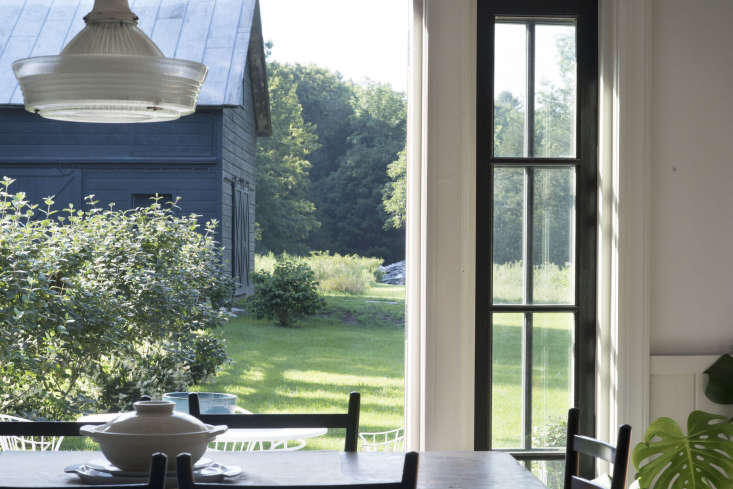 Above: Photograph by Mylene Pionilla, from Architect Visit: An Antiquarian Farmhouse in Upstate New York Transformed.
Above: Photograph by Mylene Pionilla, from Architect Visit: An Antiquarian Farmhouse in Upstate New York Transformed.
7. Last but not least, get an inspection.
Consult an expert (or two): An official inspector can tell you the nitty-gritty of your house—before you start tearing down walls.
For much more on the fine points of buying (and renovating) old houses, see What to Know When Buying a House: 8 Small Signs that Signal Big Problems—as well as 6 Problems that Shouldn’t Be Dealbreakers.
And for more in our Things Nobody Tells You series, see:
10 Things Nobody Tells You About Replacing Your Kitchen Appliances
10 Things Nobody Tells You About Plywood
10 Things Nobody Tells You About Basement Well-Being
10 Things Nobody Tells You About Renovating Your Kitchen
10 Things Nobody Tells You About Painting Floors
10 Things Nobody Tells You About Subway Tile
10 Things Nobody Tells You About Painting Furniture
10 Things Nobody Tells You About Washing Your Bedding
10 Things Nobody Tells You About the Trendiest Tile of 2019
10 Things Nobody Tells You About Renovating Your Bathroom
10 Things Nobody Tells You About the Benefits of Wool
10 Things Nobody Tells You About Clawfoot Bathtubs
10 Things Nobody Tells You About Painting Kitchen Cabinets
10 Things Nobody Tells You About Shiplap
10 Things Nobody Tells You About Marble Countertops
10 Things Nobody Tells You About Painting a Room White
N.B.: Featured photograph by Greta Rybus for Remodelista, from The House That Craigslist Built: A Bare-Bones Farmhouse in Midcoast Maine.
Read more: remodelista.com

